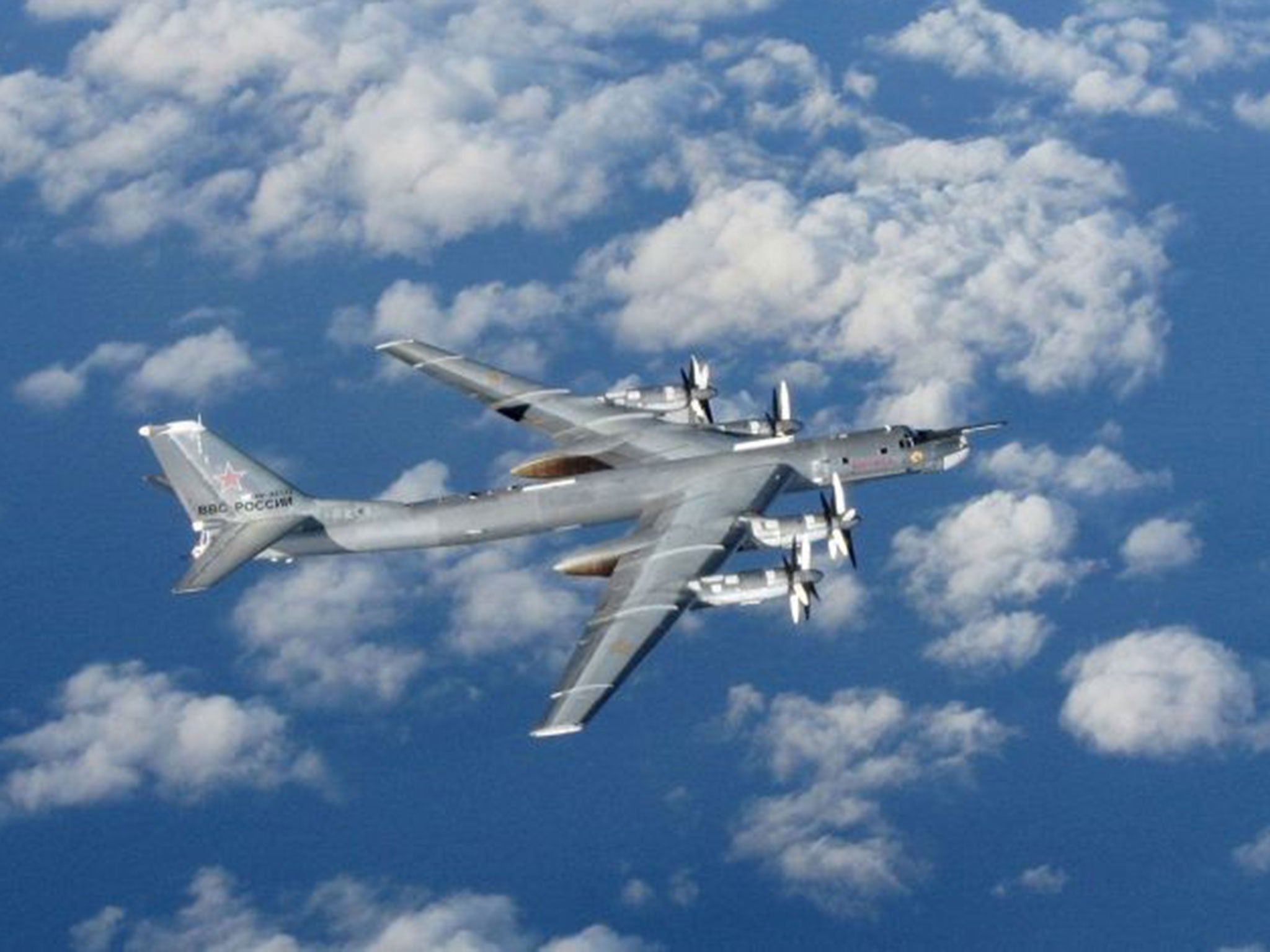'Highly disturbing' Russian military strategy causing dangerous military encounters - report
Almost 40 'near-misses' involving Russian aircraft were recorded since March

Russia is pursuing a “highly disturbing” military strategy resulting in almost 40 dangerously close encounters with Nato forces and civilian aircraft in just eight months, according to a new report.
London-based thinktank the European Leadership Network (ELN) said Cold War-style “brinkmanship” by Vladimir Putin’s air force was creating the risk of military escalation across the continent.
The intensity and gravity of incidents involving Russian and Western military and security agencies has increased since the annexation of Crimea in March, the report found.
It listed near-misses including violations of national airspace, emergency scrambles, narrowly avoided mid-air collisions, close encounters at sea and simulated bombing attacks stretching from the North Sea to the Baltic and Arctic regions and along the US coast.
Finland's President warned that Europe was being pushed to the brink of a "new kind of Cold War" in the wake of the incursions.
Three incidents were classified “high-risk”, including a narrowly avoided collision between a civilian Scandinavian Airlines flight taking off from Copenhagen on 3 March and a Russian plane.
See the full list of incidents here.
The Boeing 737, heading to Rome with 132 passengers on board, came within 90 metres of a Russian reconnaissance aircraft which was not transmitting its position.
Another incident chronicled in the report saw Russian bomber aircraft practicing what researchers claimed were simulated cruise missile strikes against the US in the Labrador Sea, near Canada, in September.
RAF Typhoons were scrambled twice within a week to intercept Russian Bear bombers nearing UK airspace in October as formations of Russian planes were tracked by Nato radars while engaged in “significant military manoeuvres” ranging from the Black Sea to the Atlantic Ocean.
Jets from Turkish, Portugal, Germany, Denmark, Finland and Sweden were all involved in interceptions over the same period.
RAF jets were also launched in October to intercept a Russian-made Latvian cargo plane which was causing concern to air traffic control authorities.
Nato's evolution
Show all 7A group of aviation enthusiasts, EGXCinfo, posted an audio clip on their Twitter account, which they said was of an RAF pilot issuing a threat to open fire unless the then unidentified plane made contact.
“I am instructed by Her Majesty's Government of the United Kingdom to warn you that if you do not respond immediately to my orders, you will be shot down,” the voice on the recording says.
The disturbances have not been confined to encounters between planes – Russian aircraft have reportedly made provocative “passes” of American and Canadian warships.
And last month, Sweden vowed to use force if necessary in its biggest anti-submarine operation since the Cold War in efforts to find the source of “foreign underwater activity” off the coast of Stockholm.
A spokesperson for the ELN said: “Even though direct military confrontation has been avoided so far, the mix of more aggressive Russian posturing and the readiness of Western forces to show resolve increases the risk of unintended escalation and the danger of losing control over events.”
It called on the Russian Government to urgently assess its strategy in co-ordination with Western diplomats and encouraged all sides to exercise “military and political restraint”, as well as improving military communications and transparency.
A spokesperson for Nato said it has conducted more than 100 intercepts of Russian aircraft in 2014 to date - three times more than were conducted in the whole of 2013.
“Scrambles and intercepts are standard procedure when an unknown aircraft approaches Nato airspace,” he added.
“However, such flights pose a potential risk to civil aviation given that the Russian military often do not file flight plans, or use their on-board transponders. This means civilian air traffic control cannot detect these aircraft nor ensure there is no interference.”The report said Russia’s actions as well as the Nato response increasing reconnaissance flights and its military presence on the eastern flank had increased the likelihood of more “less-than-friendly encounters” between Russian and Western militaries.
It said the upsurge in activity suggested the Russian armed forces were under orders to be more aggressive towards Nato and its allies, possibly to test the response to incursions, military defence systems and the level of international co-operation.
The report added: “Perhaps equally important, Russian actions may serve propaganda-related and political aims. They serve as a demonstration of Russia’s capability to effectively use force for intimidation and coercion.”
Subscribe to Independent Premium to bookmark this article
Want to bookmark your favourite articles and stories to read or reference later? Start your Independent Premium subscription today.

Join our commenting forum
Join thought-provoking conversations, follow other Independent readers and see their replies